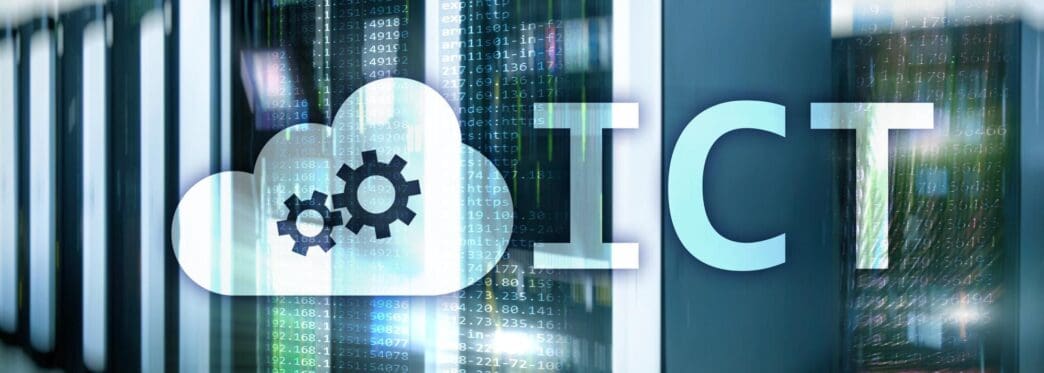Executive Summary
The Trajectory So Far
The Business Implication
Stakeholder Perspectives
Organizations worldwide grapple with a fundamental question regarding data resilience and business continuity: which backup strategy – cloud or on-premise – offers the most robust and secure protection for their invaluable digital assets? This crucial decision, impacting everything from operational uptime to regulatory compliance, hinges on understanding the distinct advantages and challenges each approach presents, and it demands a tailored evaluation of an organization’s specific needs, risk tolerance, and resource availability to safeguard against data loss and system failures effectively.
Understanding Cloud Backup
Cloud backup involves transmitting and storing copies of data on remote servers managed by a third-party service provider. This data is accessible over the internet, allowing for recovery from virtually anywhere with a connection. Instead of purchasing and maintaining physical infrastructure, businesses subscribe to a service, paying typically on a usage basis.
This method leverages the vast, distributed infrastructure of cloud providers like Amazon Web Services (AWS), Microsoft Azure, or Google Cloud Platform. Data is often encrypted both in transit and at rest, and replicated across multiple data centers for enhanced redundancy. The primary appeal lies in its scalability, accessibility, and the offloading of infrastructure management.
Advantages of Cloud Backup
Cloud backup offers significant benefits, particularly for organizations seeking agility and reduced operational burden. Its inherent scalability means businesses can easily expand or contract their storage needs without investing in new hardware. This flexibility is invaluable for growing companies or those with fluctuating data volumes.
Geographic redundancy is another key advantage. Cloud providers typically store data across multiple, geographically dispersed data centers. This protects against localized disasters like fires or floods, ensuring data remains available even if one region experiences an outage. Furthermore, cloud backup often simplifies disaster recovery, allowing quick restoration of systems and data from any location.
For many businesses, moving to cloud backup translates to a shift from capital expenditures (CAPEX) to operational expenditures (OPEX). Instead of large upfront investments in hardware and software, companies pay a predictable monthly or annual subscription fee. This can free up capital for other strategic initiatives and reduce the burden on internal IT teams, as the provider manages the underlying infrastructure, maintenance, and updates.
Disadvantages of Cloud Backup
Despite its advantages, cloud backup comes with its own set of challenges. Dependence on internet connectivity is paramount; without a stable and fast connection, both backing up and restoring data can be slow or impossible. This can significantly impact Recovery Time Objectives (RTOs) for large data sets, especially during a full system restore.
Security in the cloud is a shared responsibility. While providers invest heavily in security, organizations are still responsible for configuring their data correctly and managing access controls. Concerns about data privacy, compliance with industry-specific regulations (like HIPAA or GDPR), and the physical location of data centers can also arise. Additionally, ongoing subscription costs, potential data egress fees (charges for retrieving data from the cloud), and vendor lock-in are important financial considerations.
Understanding On-Premise Backup
On-premise backup, also known as local backup, involves storing data copies on hardware located within the organization’s own physical facilities. This typically includes tape drives, external hard drives, Network Attached Storage (NAS) devices, or dedicated backup servers. The organization is solely responsible for purchasing, configuring, maintaining, and managing all backup infrastructure.
This traditional approach provides businesses with complete control over their data and the backup process. Data remains within the company’s firewall, often allowing for faster recovery speeds for local incidents. However, it also places the full burden of infrastructure management, security, and disaster recovery planning squarely on the organization’s IT team.
Advantages of On-Premise Backup
The primary benefit of on-premise backup is the absolute control it offers. Organizations maintain full ownership and oversight of their data, hardware, and security protocols. This can be crucial for industries with stringent regulatory compliance requirements or for businesses handling highly sensitive information where data sovereignty is a major concern.
For local data loss events, on-premise backups often provide significantly faster recovery times. Data can be restored over a local area network (LAN) connection, which is typically much quicker than downloading large volumes of data over the internet. This speed can be critical for achieving tight RTOs and minimizing downtime. Furthermore, once the initial investment in hardware and software is made, there are no recurring data transfer or egress fees.
Security is entirely within the organization’s control. While this means greater responsibility, it also means businesses can implement custom security measures, physical access controls, and encryption strategies tailored precisely to their needs, without relying on a third-party provider’s security posture.
Disadvantages of On-Premise Backup
On-premise backup demands substantial upfront capital investment in hardware, software, and the necessary infrastructure. This includes servers, storage devices, backup software licenses, and potentially dedicated power and cooling systems. These assets also require ongoing maintenance, updates, and eventual replacement, leading to further CAPEX.
Scalability is a significant limitation. Expanding storage capacity requires purchasing and integrating new hardware, which can be time-consuming and expensive. This lack of elasticity can make it challenging for businesses with rapidly growing data needs. Moreover, on-premise solutions are vulnerable to localized disasters; if the primary and backup systems are in the same physical location, both could be compromised by a single event like a fire, flood, or power outage.
Managing an on-premise backup solution requires dedicated IT staff with expertise in backup administration, hardware maintenance, and troubleshooting. This adds to operational costs and can divert resources from other strategic IT initiatives. Ensuring data integrity, performing regular test restores, and physically transporting offsite copies (if implemented) are all responsibilities that fall entirely on the organization.
Key Comparison Points
Choosing between cloud and on-premise backup requires a detailed evaluation across several critical dimensions.
Cost Implications
Cloud backup typically involves lower upfront costs but higher ongoing operational expenses in the form of subscriptions and potential egress fees. On-premise backup demands significant initial capital expenditure for hardware and software, followed by ongoing maintenance, power, and cooling costs, but generally no recurring data transfer fees.
Data Security and Compliance
Both methods offer robust security when implemented correctly. Cloud providers invest heavily in security, but organizations must understand the shared responsibility model. On-premise offers complete control over security, which can simplify compliance for highly regulated industries, provided the organization has the expertise and resources to manage it effectively. Data sovereignty and residency requirements are often easier to manage with on-premise solutions.
Scalability and Flexibility
Cloud backup excels in scalability, allowing businesses to adjust storage capacity on demand. On-premise solutions require manual upgrades and additional hardware purchases, making them less flexible for rapid growth or fluctuating needs.
Recovery Time Objective (RTO) and Recovery Point Objective (RPO)
For local data loss, on-premise solutions often offer faster RTOs due to LAN speeds. However, for widespread disaster recovery, cloud solutions can provide superior RTOs if the internet connection is robust, as they can restore to new infrastructure anywhere. RPOs depend more on backup frequency and bandwidth, achievable by both methods.
Management and Maintenance
Cloud backup offloads much of the infrastructure management to the service provider, reducing the burden on internal IT teams. On-premise backup requires significant internal resources for setup, monitoring, maintenance, and troubleshooting, including physical hardware management and software updates.
The Hybrid Approach
Many organizations are adopting a hybrid backup strategy, combining elements of both cloud and on-premise solutions. This often involves keeping critical, frequently accessed data on-premise for fast recovery, while archiving less frequently accessed or long-term retention data to the cloud for cost-effectiveness and disaster recovery. This “3-2-1 rule” — three copies of data, on two different media, with one copy offsite — is often best achieved through a hybrid model, using cloud as the offsite component.
A hybrid approach leverages the strengths of both worlds: the speed and control of local backups for day-to-day operations and the scalability, redundancy, and disaster recovery capabilities of the cloud for ultimate data protection. It requires careful planning and integration, but it can offer a robust and balanced solution for complex business needs.
Making the Right Choice
The optimal backup strategy is not a one-size-fits-all solution; it depends entirely on an organization’s unique requirements. Factors to consider include budget (CAPEX vs. OPEX preference), the volume and sensitivity of data, RTO and RPO targets, regulatory compliance obligations, existing IT infrastructure, and the expertise of the internal IT team. Small businesses with limited IT resources might find cloud backup more appealing, while enterprises with strict data governance or very large data sets might favor a hybrid or predominantly on-premise model. Thoroughly evaluating these factors will guide businesses toward a data protection strategy that best secures their assets and ensures continuity.








